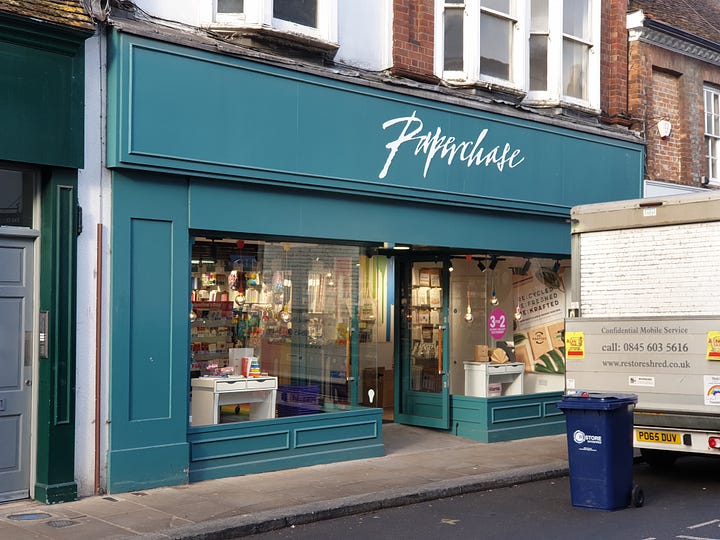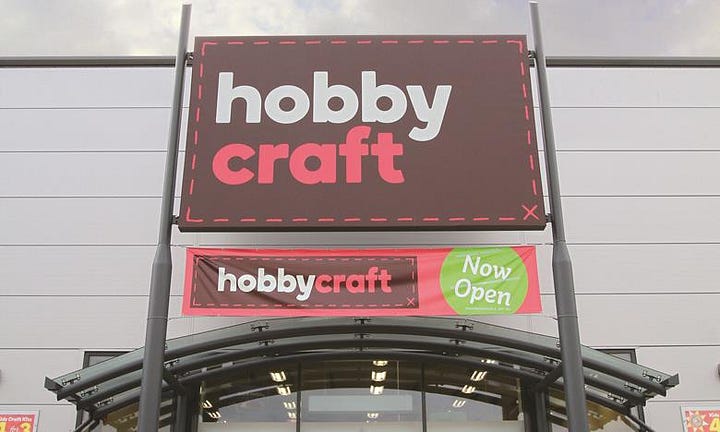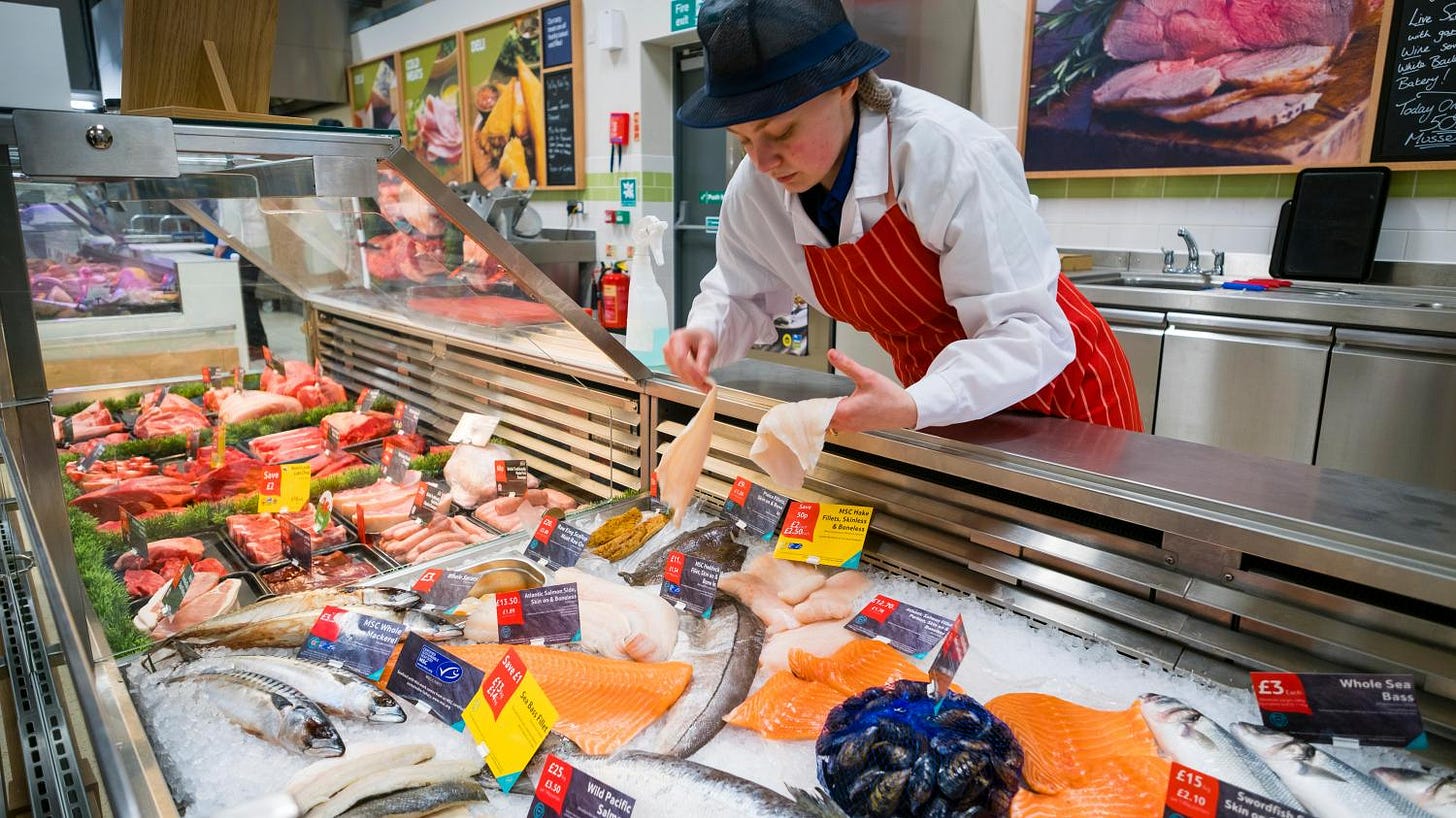Experience matters
Consumer mega-trends #1


Two retail stories from the last week got me thinking about the power of delivering ‘experiences’ alongside the more traditional retail task of selling products.
The first was the sad demise of Paperchase, with the brand assets sold to Tesco but the stores left to close in administration. Every retail administration is gutting, particularly given the large number of long serving colleagues in a business like this one who are left without jobs, but the Paperchase administration particularly upset me because I wonder if it could have been avoided.
There will be a lot of direct and very familiar drivers to the failure of the business including, no doubt, over-expansion of the store estate and the cost of debt. But a really interesting comparison to make is between Paperchase and Hobbycraft, a retailer many would have seen a few years ago as having no future at all but which actually delivered reasonable trading results this Christmas and seems in fair health.
The experience trend
A few years ago in my book Reinventing Retail I wrote about some of the consumer trends that retailers might use to avoid being driven down the dismal path of trying to compete purely on price with low-cost retailers and e-commerce businesses. Over time here on Moving Tribes I want to amplify and expand on those trends, as they can be really helpful prompts when forming or evaluating a strategy for a retail business.
The Paperchase/Hobbycraft comparison is an interesting example of one of those consumer trends - that we tend these days to value experiences as much as we value ‘stuff’. So here we are with the first in what will become an occasional ‘consumer mega-trends’ series of posts.
In reality there are all sorts of differences between the Paperchase and Hobbycraft models. Retail park versus town centre locations, size of outlet and target customer segments all vary between the businesses. It is also perfectly possible that the balance sheets of the businesses (and particularly their debt burdens) also vary, and in these economic times that will make a big difference.
But read the two Retail Week1 stories I’ve linked above, and another difference leaps out. Hobbycraft ran festive craft workshops attended by thousands of people in the run up to Christmas, bringing the products on its shelves to life for its customer base in a way that point of sale simply can’t. Arguably, it even took the ‘experience’ strategy online with its successful social media partnerships.
“Hobbycraft’s festive workshops – which ran for 16 weeks and involved crafts such as wreath and advent calendar making – were attended by 16,000 adults and children”
For a specialist retailer, this kind of “experience-led” marketing and retail strategy can be incredibly powerful. You are supposed to be expert in the product categories you sell, so why not demonstrate that and simultaneously show your customers all the ways they can get value and enjoyment from the products you sell?
That was always one of my frustrations with Paperchase. As a design-led business with (I suspect) a younger customer base, what could they have done to further engage and inspire their customers to have fun with their products? What kind of workshops might have drawn people into store? How much could passionate customers have been further engaged with ‘sneak peaks’ at forthcoming designs?
Without that, the business was left with the traditional retail model of “putting things on shelves and hoping people buy them”. That is fine when the economy is strong but when business is harder to come by you need different ways to draw people into store.
Much of the online critique of Paperchase in the week it went into administration was that they were undone by price-based competition from card retailers, supermarkets and the online greetings card printers, but all that proves is that they had left themselves exposed to price comparison and shopping around.
The Paperchase I remember from its best days wasn’t about “how much is a Birthday card?”. It was a set of seasonal and regularly changing design ideas turned into cute products that its customers loved. Somehow, over time, that got a bit lost and the spectre of price comparison loomed.
Building a relationship with your customers based on experiences can be a powerful way to ‘shift the debate’ and get away from clinical comparison shopping. I wonder, therefore, whether a strategy like that might have helped Paperchase stay above the fray for a bit longer?
Experiences take many forms
Retail experiences can take many forms. One is the ‘how to use this product’ workshop, as in the Hobbycraft story. But there are plenty of others too:
the sports shop that also coordinates, and acts as a clubhouse for, the local running club
the cycling shop running demonstrations of various technical upgrades its customers can do to their bikes
The deli running cooking classes
The bathbomb shop (yes, that one) that cheerfully throws its products into sinks to demonstrate them to its customers
The video game or book store running ‘midnight openings’ on the day the hot new title comes out
The cosmetic retailer running makeovers
All of these examples position the retailers’ offering as more than just a straight ‘product for price’ equation. All of them also, by the way, create a purpose and business case for the physical store by delivering something a pureplay will struggle to match.
A common objection to creating these kind of experiences is that not that many people will directly benefit from them, and this is certainly the case. Even the ‘thousands’ of people who attended Hobbycraft festive workshops will be fraction of the footfall the stores experiences over that period.
But offering these kinds of experiences achieves more than just delivering something for those who directly take part. It positions the retailer as having genuine knowledge of, and passion for, its products. Even for those who don’t take part but are simply aware of the activities going on, it makes the specialist retailer feel more, well, specialist. And that can’t be a bad thing when your competition is trying to lure you into a race to the bottom on simple price comparisons.
A ‘counter’ example
All of which makes the second news story of this week a really interesting one. As widely reported, Tesco (yes, them again) has decided amongst other structural changes to close all of their fresh food counters.
That prompted some interesting debate on both Twitter and LinkedIn. The case for closing the counters is a simple one - not enough people use them, they are expensive to run and therefore the business case for them is negative.
But viewed through the lens of the power of experience, would we come to a different conclusion? Do they play any role in establishing your local Tesco as a place where meat and fish are valued, of high quality and worth eating? Does that in turn make any difference to non-counter purchases? Does the comforting presence of apparently expert butchers and fishmongers help to differentiate the store versus others, driving traffic and sales in other departments too?
Of course, only the Tesco executives who made the decision (hopefully) know the answers to those questions, and the power of experience isn’t necessarily as potent for a supermarket as it is for a specialist retailer.
But whatever type of retail business you work in, invest in or write about, it is worth giving some thought to the power of experience for your brand. What could you do to further position yourself and your colleagues in store as expert in and passionate about the products you sell?
What is your favourite example of a retailer using experience to add value for its customers? Please do comment below or in one of the social media threads this post generates, I’d love to hear from you.
The lesson from many retailers around the world is that tapping into the consumer desire to ‘experience’ as well as ‘purchase’ is a powerful strategy that can reap significant rewards.
P.S.
As ever, if you’ve enjoyed this post please do share it around. I really want to get Moving Tribes in front of as many people as possible, so click the button here and share this post on whatever social media platform is your favourite! The button below will allow you to share directly to Twitter or Facebook, or let you copy the link so you can share on LinkedIn.
Thanks, Ian
All of the links in this week’s newsletter are (coincidentally) to Retail Week. If you hit the paywall, my advice is to subscribe - it is an excellent trade journal and well worth your support.



- What is your favourite example of a retailer using experience to add value for its customers?
When I was 16 I worked in a camera shop - I was and still am very much into photography - but it wasn't just about shifting boxes. We had an onsite studio where sessions would be held to show people how to use lighting and and appropriate equipment for portraits etc., and we also had a photo darkroom (this was pre digital) where customers interested in processing their own film/prints could be shown the basics.
Both were obviously good ways of generating more sales as well as being fun for staff and customers!
Another example I can think of is Evan's cycles who used to run occasional bike maintenance workshops in the stores in the evenings as well as organise bike rides at weekends (they don't seem to do these now under Sports Direct ownership). However, Evans went into administration which brings me onto another point - how many customers really value service? The key word being value.
We all like great service and places that offer something more like the examples above, but it appears that the majority will still go to buy where a product is cheapest. How many will visit a local store to view products, get advice and information then walk away and buy the cheapest one they can find online? These same people will no doubt moan about the decline of their local high street when they can no longer go to those local shops for advice!
Unless more people are prepared to value great service, and therefore making it viable, the decline we're seeing will, I think, only continue.
Really enjoy reading these Ian! And isn’t creating an engaging/memorable/fun (🤯) customer experience the best bit for the Marketing dept as well as the customer?! Not just transactional, an event mentality that you can’t get from just scrolling 👏 hope all is well. C